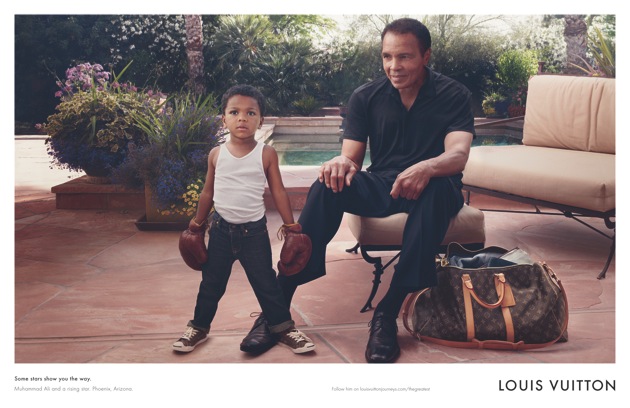Fashion has consistently wanted in on the Super Bowl as a chance to reach the 100+ million viewers that tune in each year. As such, it only makes sense that industry figures would want to tap into the slated 50 million American viewers – and up to 1 billion international homes, in what promoters are estimating to be 200 different countries – that are expected watch Saturday’s fight between champions Floyd Mayweather and Conor McGregor.
As Quartz’s Marc Bain so aptly put it this week, “When the undefeated boxer Floyd Mayweather and the mixed-martial arts champion Conor McGregor square off in a Las Vegas boxing ring on August 26, it won’t just be a battle between two fighters. It’ll be a battle of two celebrity brands.”
Bain is right. Not only does fashion want a piece of the boxing/MMA worlds, which it hopes to reach thanks to Saturday’s highly-publicized event, these two famous figures are looking to reinforce and expand upon their own brands, as well. The result looks a little something like this: Mayweather is being dressed by German designer Philipp Plein for the events surrounding Saturday’s fight, including a custom robe and trunks designed by Plein for the fight. Mayweather is also slated to debut a collaboration with Plein’s brand on Saturday evening, as part of a larger two-year deal.
Not to be outdone, McGregor is teaming up with David August Heil for his weekend wardrobe and will debut a menswear collection with Heil in the spring of 2018, to be called August McGregor. Heil, who is best known for his pricey made-to-measure suits and famous clients, including Presidents Bill Clinton and George W. Bush, has also found a fan in McGregor, of course, who boasts a collection of hundreds of Heil’s three-piece suits.
But it is not just these brands that are looking to the big event for press. Versace, which dressed Lady Gaga for the Super Bowl in February, wants in. The Italian brand sent a custom robe to McGregor earlier this month, which he showed off to his 17.2 million followers on Instagram. Meanwhile, on Twitter, he has been heavily pushing his deal with Beats by Dre in the days leading up to the fight.
Mayweather, on the other hand, is busy posting sponsored content on his own social media accounts. The boxing champ is currently promoting the Initial Coin Offering – an unregulated means of crowdfunding via cryptocurrency – for a startup called Hubii Network. Ads for the company, which describes itself as a “Blockchain-based Decentralised Content Marketplace,” appear on Mayweather’s Instagram, which boasts 16.5 million followers. He is pushing Avion Tequila on Twitter for his 7.41 million followers to see.
Both men are obviously taking home additional – and certainly sizable – paychecks for these endorsements. If traditional ad spends for these major sporting events are anything to go by – media executives projected that the cost of a 30-second commercial for Super Bowl 50 could exceed $5 million – Mayweather and McGregor stand to profit quite handsomely for these social media shout outs.

Now, this is not to say that fighters in the past have not drawn attention as a result of their attire and endorsement making-abilities in connection with big fights. As the Las Vegas Sun wrote in 2008 leading up to a “mega” fight between Manny Pacquiao and Oscar De La Hoya, making note of the fighters’ wardrobes: The “sharp-looking Pacquiao,” who has fronted campaigns for Nike and Hennessey (the latter of which falls under the umbrella of LVMH, also parent to Louis Vuitton), among other brands, “was decked out in a navy suit, light blue shirt and festive dark blue and gold tie.” De La Hoya, on the other hand, “was dressed up in a white button down and designer jeans.”
Before that, though, Muhammed Ali was celebrated for his personal style – both in the ring and in terms of clothing. The late Ali – certainly an influencer in his own time – starred in ad campaigns for brands ranging from Apple to Louis Vuitton.
What does appear to be somewhat different now, though, aside from the huge spike in social media activity (both in general and in connection with big sporting events) is that these big-name fighters are not happy to have their brands boxed into just one category, nor are they happy to limit their income to the most traditional sponsorship deals.
They have large followings in terms of the audiences for their fights – both in terms of those paying to view at home and those willing to shell out thousands of dollars for tickets to attend. They have also built up a significant base of people who are following along with them on a daily basis on social media. With this in mind, it only seems fitting that they have found ways to monetize themselves and their interests, one of which happens to be fashion, even further.







